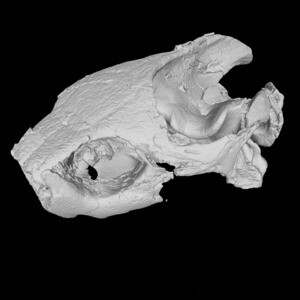 Media 000374474: Reconstructed Cranium
Restricted Download
Type
Mesh
Modality
X-Ray Computed Tomography (CT/microCT)
Media represents biological specimen
Managed by
Media 000374474: Reconstructed Cranium
Restricted Download
Type
Mesh
Modality
X-Ray Computed Tomography (CT/microCT)
Media represents biological specimen
Managed by
Media 000374474: Reconstructed Cranium
Restricted Download
Type
Mesh
Modality
X-Ray Computed Tomography (CT/microCT)
Media represents biological specimen
Managed by
Login or create an account to download files
Media Display
In Collections
TAGS
GENERAL DETAILS Field Definitions
Media ID
000374474
Media type
Mesh
Object element or part
Reconstructed cranium
Object represented
Object taxonomy
Adocus lineolatus
Object organization
Side
NotApplicable
Orientation
--
Short description
--
Full description
--
Creator
Serjoscha Evers
Date created
August 04, 2021
Date uploaded
August 04, 2021
FILE OBJECT DETAILS Field Definitions
File name
Adocus_lineolatus_CMM60-15_reconstruction_cranium.ply
File format(s)
PLY
File size
495 MB
Points
7725177
Polygons
2576004
Map type
--
UV coordinates
False
Vertex color
False
Bounding box dimensions
63.822, 96.733, 74.829
Centroid coordinates
-8.652, -8.118, 3.406
Units of point coordinates
--
IMAGE ACQUISITION AND PROCESSING AT A GLANCE Field Definitions
Number of parent media
1
Number of processing events
2
(0 steps)
Derived directly from
Modality
X-Ray Computed Tomography (CT/microCT)
Device
Nikon Metrology XT H 225 ST, Molecular Imaging Center (University of Southern California)
OWNERSHIP AND PERMISSIONS Field Definitions
Data managed by
Data uploaded by
Publication status
Restricted Download
Download reviewer
IP holder
--
Copyright statement
--
Creative Commons license
--
Morphosource use agreement type
Standard
Permits commercial use
Commercial Use Not Permitted
Permits 3D use
3D Printing Limited
Required archival of published derivatives
On MorphoSource
Funding attribution
--
Publisher
--
Cite as
--
Media preview mode
Interactive/Embeddable
Additional usage agreement
None
IDENTIFIERS AND EXTERNAL LINKS Field Definitions
MorphoSource ARK
MorphoSource DOI
Not assigned
External identifier
--
External media URL
--
IMAGE ACQUISITION AND PROCESSING IN DETAIL
STEP 1: IMAGE ACQUISITION
Physical object
ccm:60-15
was imaged to create
undeposited raw media.
IMAGING DETAILS Field Definitions
Modality
X-Ray Computed Tomography (CT/microCT)
Device facility
Molecular Imaging Center (University of Southern California)
Creator
--
Event date
--
Software
--
Description
--
Description attachment
None
Reference attachment
None
Exposure time
--
Flux normalization
--
Pixel spacing calibration
--
Shading correction
--
Frame averaging
--
Projections
--
Voltage
90 kV
Power
--
Amperage
240 uA
Surrounding material
--
X-ray tube type
--
Target type
--
Detector type
--
Detector pixels X
--
Detector pixels size X
--
Detector pixels Y
--
Detector pixels size Y
--
Detector configuration
--
Source object distance
--
Source detector distance
--
Target material
--
Rotation number
--
Phase contrast
--
Optical magnification
--
Acquisition type
--
STEP 2: IMAGE PROCESSING
Raw media (undeposited)
was processed
to create
derived
Media 000355455: Skull (Cranium & Mandible) [CTImageSeries] [CT].
Processing Details Field Definitions
Creator
--
Event date
--
Software
--
Description
--
Description attachment
None
Media produced by this event on MorphoSource
STEP 3: IMAGE PROCESSING
Derived
Media 000355455: Skull (Cranium & Mandible) [CTImageSeries] [CT]
was processed
to create
derived
Media 000374474: Reconstructed Cranium [Mesh] [CT] (this media).
Processing Details Field Definitions
Creator
Serjoscha Evers
Event date
--
Software
--
Description
In Adocus linealotus (CMM 60-15), the cranium experienced dorsoventral crushing in the snout region of the skull: both prefrontal are broken at the dorsal end of the bar that separates the orbit from the external naris. Additionally, the left jugal is broken at the posterior end of the orbit (see also Gaffney & Meylan 1989). We digitally separated the snout part (consisting of the left jugal, left maxilla, partial left prefrontal, both premaxillae, partial right prefrontal, and right maxilla) along the fractures from the rest of the cranium into separate models. Both models were then imported as PLY files into Blender, and the snout region was re-articulated with the remainder of the cranium. Additionally, within the braincase, the ventral process of the left supraoccipital was broken off the remainder of the supraoccipital (which is preserved in articulation). The ventral process of the supraoccipital houses the common crus area of the endosseous labyrinth, and therefore the supraoccipital breakage affected the endosseous labyrinth model. To reconstruct the endosseous labyrinth, we produced two separate models in Mimics, for the prootic-opisthotic part of the labyrinth, and the supraoccipital part, respectively. We imported both models into Blender, and digitally re-articulated. Cranial and labyrinth reconstructions had to be performed in the same Blender file to preserve the geometric relationships between labyrinth and cranium.
Description attachment
None